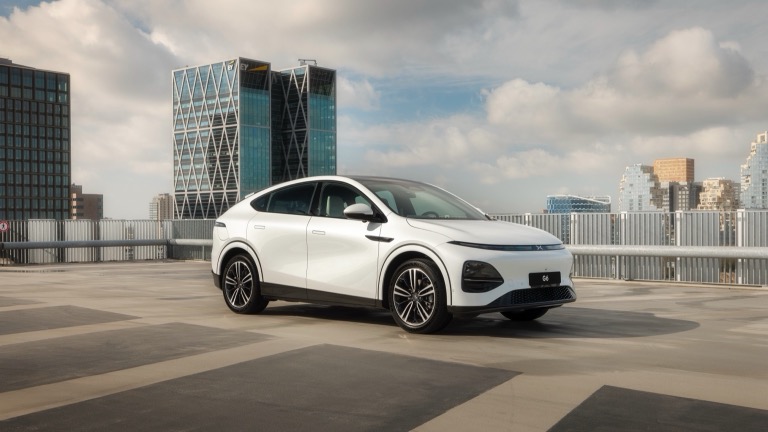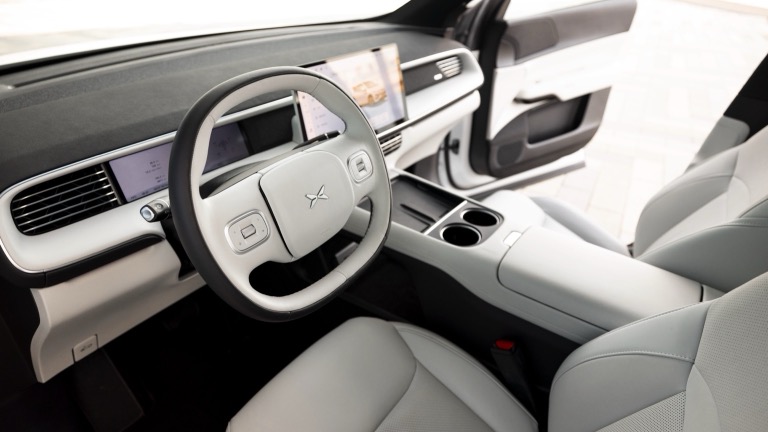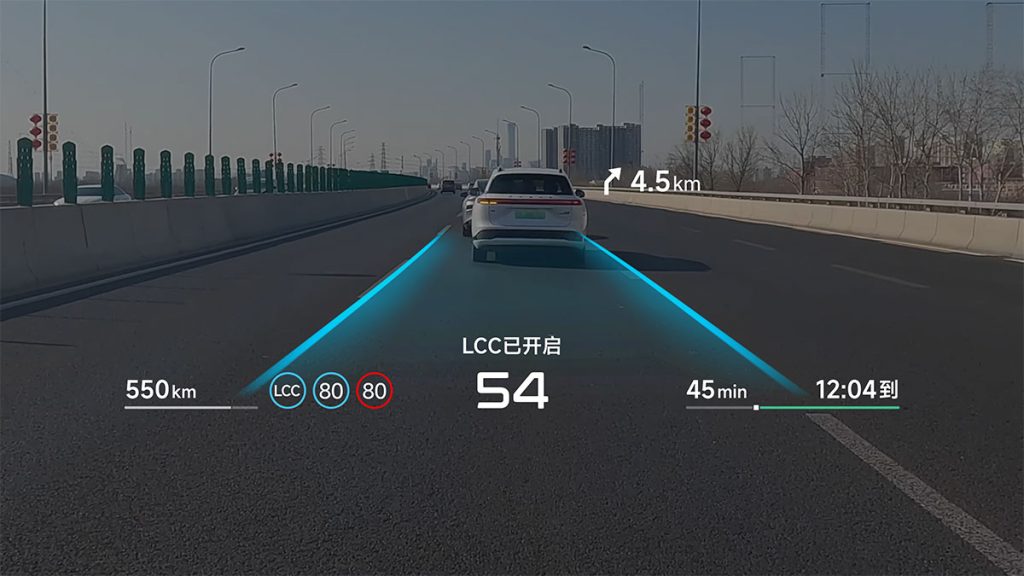
Chinese electric-vehicle maker Xpeng has quietly continued its push into right‑hand‑drive markets with the refreshed G6 – a mid‑sized electric SUV that was shown in Thailand as the updated 2025/2026 model. The upgrades are substantive: lower price, faster charging, a more refined chassis, and a notable step forward in driver‑assistance hardware. For Australian buyers watching the market for competitively priced EVs, the G6’s refresh brings the model closer to being a genuine contender – provided regulatory approvals, local charging compatibility and aftersales support are in place.
What’s new and why it matters
- Price: Xpeng has re‑positioned the G6 to be substantially cheaper than the previous launch figures in Thailand. Two confirmed Thai variants – Long Range and AWD Performance – both use an 80.8 kWh Lithium‑Iron‑Phosphate (LFP) pack and are priced well below the 2024 entry price when converted to AUD. That makes the G6 more competitive against similarly priced Chinese EVs already active in Australia.
- Charging architecture: The headline upgrade is the adoption of an 800‑volt electrical architecture that, according to Xpeng, enables charging from roughly 10% to 80% in around 12 minutes on suitably powerful DC fast chargers. If realised under Australian conditions, that performance would put the G6 into the very fast‑charging bracket alongside other next‑generation EVs – but it will depend on the availability of ultra‑high‑power chargers across the national network.
- Battery chemistry: Both variants use LFP cells. LFP brings benefits in cost, cycle life and thermal stability, and aligns with the global trend of using LFP for mainstream, high‑volume EVs. The trade‑off is lower energy density versus nickel‑based chemistries, but Xpeng’s 80.8 kWh pack should still deliver competitive real‑world range for daily driving.
- Driver assistance and compute: The updated G6 steps up its autonomous driving hardware with high‑resolution front and rear cameras and dual Nvidia Orin processors. Xpeng continues to favour a LiDAR‑free approach to intelligent driving – relying on camera, radar and software – which may simplify cost and sensor maintenance but relies heavily on robust map and software validation for real‑world safety.
- Ride and refinement: A new double‑wishbone front suspension with hydraulic damping aims to improve ride comfort and composure on mixed road surfaces – a relevant change for Australian roads, which present a wide variety of surfaces and speed environments.
- Design and interior: The refresh is evolutionary rather than revolutionary. Expect a revised front light bar and bumpers, a rear spoiler light strip, new wheel options and revised paint choices. Inside, the cabin receives upgraded trim materials, larger central touchscreen and ambient lighting to lift perceived quality.
Variants and indicative pricing (Thailand launch, AUD conversions)
- Long Range – 80.8 kWh LFP, single motor: ~AU$64,300 (noted as cheaper than the 2024 launch price)
- AWD Performance – 80.8 kWh LFP, dual motor: ~AU$71,000
Note: These are Thai market prices converted to AUD for context. Australian pricing will depend on local specs, import taxes, options and aftersales packages and may therefore differ.

How this sits in the Australian context
- Charging infrastructure: The 800‑volt architecture requires ultra‑high‑power DC chargers (typically 350 kW+ peak) to achieve the sub‑15 minute 10-80% claim. Australia’s public charging network is growing – with operators such as Chargefox, EVie and others expanding high‑power sites – but ultra‑fast coverage remains spotty outside major corridors and capital cities. Prospective buyers should confirm real‑world charge speeds on routes they use most.
- Connector standards: Australia predominantly uses CCS2 for public DC fast charging. Before launch, Xpeng will need to confirm the G6’s physical connector, communication protocols and any adapter solutions. Local compatibility will be a practical priority for everyday usability.
- After‑sales and service: Market success often hinges on service networks, software support and warranty. Xpeng has emphasised over‑the‑air (OTA) updates and connected services in other markets; the brand will need local service centres, parts supply and a clear warranty proposition to reassure Australian buyers accustomed to established OEM support.
- Regulatory and homologation hurdles: For right‑hand‑drive models to reach Australia, Xpeng must navigate national vehicle standards, safety testing and ADR compliance. Timing will therefore be contingent on those approvals and on Xpeng’s commercial decision to establish retail and service footprints.
- Local competition: The G6’s revised price and features will see it compete against other value-oriented Chinese EVs that have entered Australia in recent years, as well as established rivals from Europe and the US in the mid‑sized SUV segment. Buyers will weigh price and tech against brand, service and charging convenience.
Technical nuggets for the tech‑minded
- LFP battery: Lower cost and excellent cycle life. LFP chemistry is less temperature‑sensitive than some alternatives and is becoming mainstream for many daily‑use EVs.
- 800 V system: Enables higher power charging with lower current, reducing heat and cabling mass. Achieving the fastest charge rates in practice requires both a capable battery management system and access to very high‑power chargers.
- Nvidia Orin compute: This is a high‑performance automotive AI platform that supports advanced perception and driver‑assist features. Dual Orin chips suggest Xpeng is pushing for more sophisticated on‑board processing to enable its LiDAR‑free semi‑autonomous features.

What to watch before making a decision
- Official Australian pricing and specifications: Wait for local confirmation of trims, standard equipment and warranty terms.
- Charging standard and real‑world charge rates: Confirm connector type, maximum DC charging power, and expected charging times on local networks.
- Dealer and service network rollout: Evaluate the availability and responsiveness of service centres, mobile service options and parts support.
- Safety and regulatory approvals: Ensure the vehicle meets Australian Design Rules (ADRs) and local crash and safety testing expectations.
- Software and maps for driver assistance: LiDAR‑free systems depend heavily on data and software quality. Ask about local validation and features that are enabled for Australian roads.
Conclusion
Xpeng’s refreshed G6 represents a meaningful step forward for the brand’s fight for market share in right‑hand‑drive territories. With lower pricing, a robust LFP pack, an 800‑volt charging architecture capable of very rapid top‑up times and upgraded driver‑assist hardware, the G6 is engineered to appeal to value‑conscious, tech‑oriented buyers. For Australians, the key questions will be local pricing, charging compatibility and after‑sales support: the car’s hardware and figures are compelling on paper, but market success depends on the practicalities of getting parts, service and charge points in place. If Xpeng can demonstrate a credible local plan, the G6 could be an attractive option for buyers seeking a feature‑rich, fast‑charging EV without the premium badge price.
Frequently asked questions (FAQs)
Q: Is the Xpeng G6 available in Australia now?
A: As of the Thai launch of the refreshed model, Xpeng has shown intent to expand right‑hand‑drive availability, but an official Australian release date, local pricing and specification details will need to be confirmed by Xpeng and local regulators.
Q: How fast does the G6 charge in real life?
A: Xpeng claims roughly 10-80% in around 12 minutes on compatible ultra‑high‑power DC chargers thanks to an 800‑volt architecture. Real‑world charging times will depend on available charger power, environmental conditions and state of charge.
Q: Will the G6 use CCS2 or another connector in Australia?
A: Australia typically uses CCS2 for public DC charging. Xpeng will need to confirm the G6’s connector and protocol for the Australian market; prospective buyers should verify connector compatibility before purchase.
Q: How is LFP battery chemistry different from other EV batteries?
A: LFP (Lithium‑Iron‑Phosphate) batteries offer greater cycle life, improved thermal stability and lower cost, but typically lower energy density than nickel‑rich chemistries. They’re increasingly common in mainstream EVs for those reasons.
Q: Is the G6’s driver‑assist system as good as LiDAR‑equipped systems?
A: Xpeng’s approach uses cameras, radar and high‑performance compute (e.g., Nvidia Orin) without LiDAR. A LiDAR‑free system can work very well, particularly with strong software and mapping data, but performance depends on real‑world validation and local road data.
Q: What warranty and service should buyers expect?
A: Warranty and service terms vary by market. Xpeng typically promotes connected services and OTA updates, but Australian buyers should confirm warranty length, roadside assistance and authorised service network details at launch.
Q: How does the G6 compare to other Chinese EVs in Australia?
A: The G6 is positioned as a competitively priced, feature‑rich mid‑sized SUV. It will compete with other value‑oriented Chinese brands and established international models. Buyers should compare range, charging, warranty and local service coverage in addition to price and features.
About EV Evolution
EV Evolution is the leading online platform dedicated to Australian electric vehicle owners and enthusiasts. We foster a vibrant community, delivering essential EV news and insights, and enhancing user engagement through our innovative, AI-powered chatbot for dynamic discussions. Our mission is to empower Australian electric vehicle owners and enthusiasts by fostering a vibrant, AI-driven online community that connects, informs, and advances the nation’s electric vehicle landscape.




